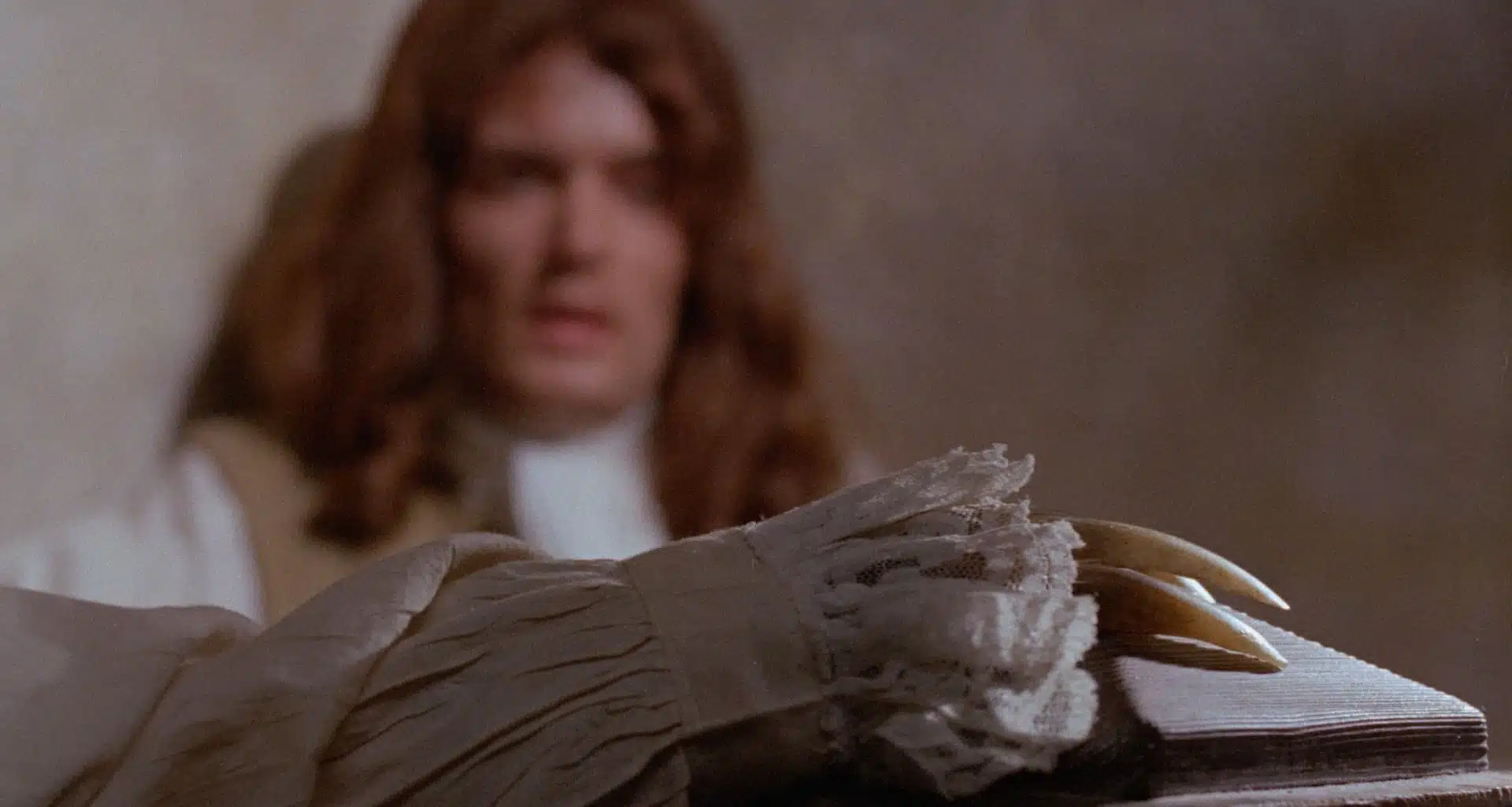One of the “unholy trinity” of British folk-horror films of the era, 1971’s The Blood on Satan’s Claw sits between Witchfinder General (1968) and The Wicker Man (1973) – there are a growing number of fans but it’s not as well known, cultish or highly regarded as the other two.
I’m guessing the scrappy narrative is to blame. Both Witchfinder General and The Wicker Man tell a simple story – a witchfinder gets his comeuppance in one, a priggish policeman in the other – but The Blood on Satan’s Claw started life as an anthology of stories all set in the same village which then got reworked after director Piers Haggard came on board.
Traces of the original idea remain and the plot darts about, first starting out in a field where yokel ploughman Ralph (Barry Andrews) unearths the skeletal remains of a skull containing a vividly alert looking eye. The story, and the influence of Satan (for it is he) then moves on through various young women in the village, all of whom go mad, become possessed or are overcome with the urge to take their clothes off, and all of whom, somewhere on their body have a patch of furry skin indicating the devil’s presence – Satan’s Skin was an early title.
It’s a familiar British-horror-movie view of a pre-industrial England of lusty swains, women in mop caps, gouty squires, ascetic clerics and a doctor as the sole repository of rationality – indeed it is the doctor who at a crucial point produces the big dusty old tome containing the vital information as to what exactly is befalling the village’s women.
Patrick Wymark (dead aged only 44 before the film came out) plays the local judge, a man not to be trifled with and the “detective” on the case, when he can bestir himself. Simon Williams, Wendy Padbury (who’d not long before been one of Dr Who’s assistants), Linda Hayden (the one who takes her clothes off), Tamara Ustinov (daughter of Peter) and Michele Dotrice (who’d later marry Edward Woodward) all bat away at their lines gamely but in many ways the most interesting character is Ralph the ploughman (Barry Andrews), who remains gloriously untainted by all the nasty goings-on, the simple soul who is noble by virtue of his lack of brains – British anti-intellectualism runs through this film in much the same way that Satan is running through the village.
Fans of Midsommar will notice some obvious lifts from this film – like the crowns made of woven budding twigs which the clean-limbed youth put on before they summon the beast in an ad hoc ceremony in the woods – but in keeping with most British films of the era, the attitude to sex is that it’s smut rather than good clean fun.
The obviously gendered story (it’s only weak woman who are troubled by Satan) add a sociological slant to a film whose ADHD storytelling style makes it a lot more layered than many another British horror film of the era, and the decision by Tigon (the producers) to stay well away from anything gothic or Victorian looks like having been a wise one. Leave that to Hammer.
The score is way too loud, as was common in British horror films of the era, but Marc Wilkinson has done good work, with tinkles and clangs adding to the disorienting effect and suggesting spookiness and things being awry rather than overtly bestial and evil.
It’s a date movie, in other words, designed to titillate rather than shock and aimed at a demographic of young men wrestling with girlfriends on the back seats of cinemas at the weekend. Look at the hairstyles of all the young people on screen – this never looks like any other time than 1971.
The recent (2019) restoration is the one to go for, if you’re going to watch it. It’s bright, clean and sharp to the point that the mark of Satan, the furry skin, looks like what it obviously is – a stick-on patch.
The Blood on Satan’s Claw – Watch it/buy it at Amazon
I am an Amazon affiliate
© Steve Morrissey 2022


